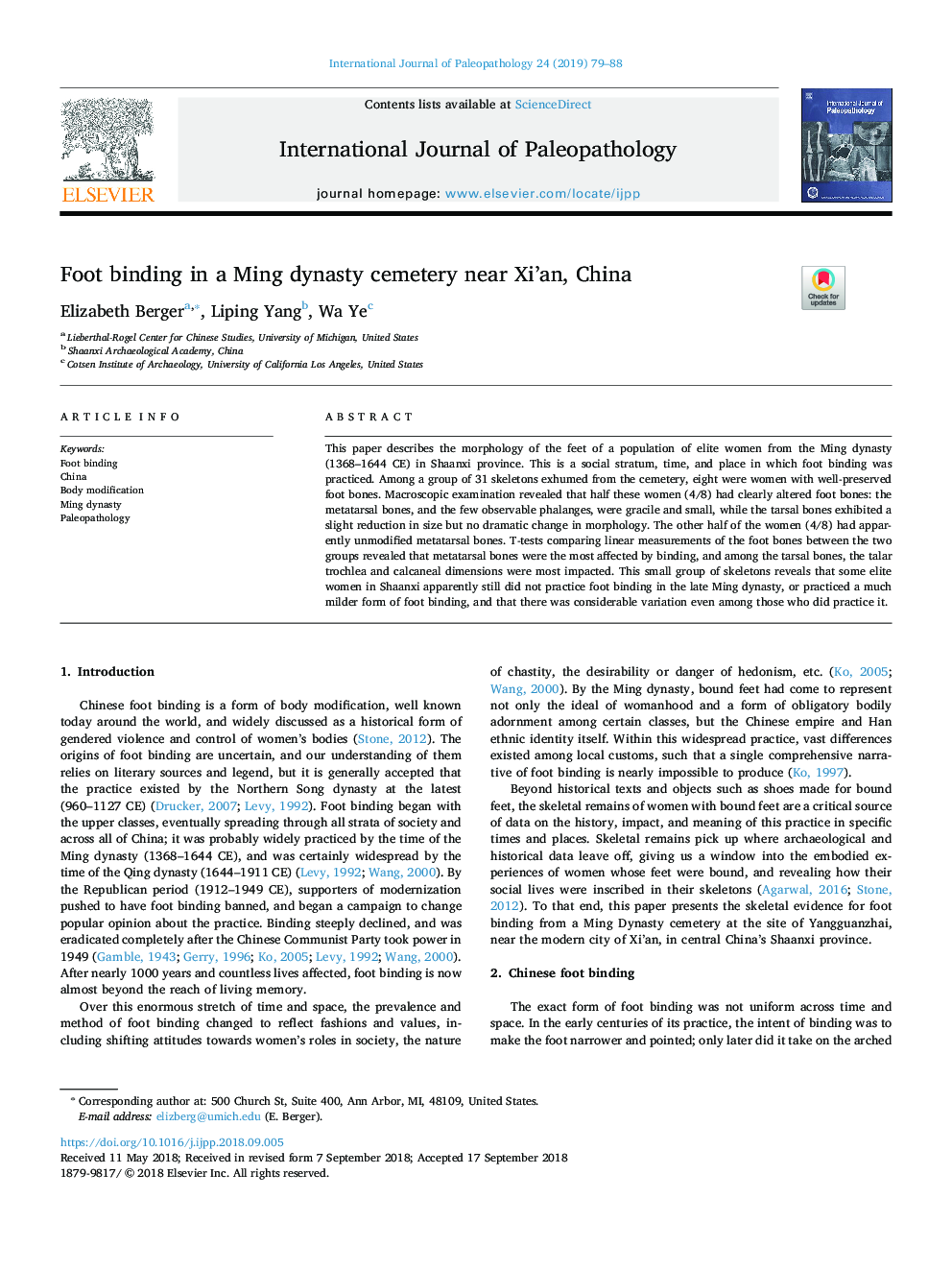| Article ID | Journal | Published Year | Pages | File Type |
|---|---|---|---|---|
| 11024506 | International Journal of Paleopathology | 2019 | 10 Pages |
Abstract
This paper describes the morphology of the feet of a population of elite women from the Ming dynasty (1368-1644 CE) in Shaanxi province. This is a social stratum, time, and place in which foot binding was practiced. Among a group of 31 skeletons exhumed from the cemetery, eight were women with well-preserved foot bones. Macroscopic examination revealed that half these women (4/8) had clearly altered foot bones: the metatarsal bones, and the few observable phalanges, were gracile and small, while the tarsal bones exhibited a slight reduction in size but no dramatic change in morphology. The other half of the women (4/8) had apparently unmodified metatarsal bones. T-tests comparing linear measurements of the foot bones between the two groups revealed that metatarsal bones were the most affected by binding, and among the tarsal bones, the talar trochlea and calcaneal dimensions were most impacted. This small group of skeletons reveals that some elite women in Shaanxi apparently still did not practice foot binding in the late Ming dynasty, or practiced a much milder form of foot binding, and that there was considerable variation even among those who did practice it.
Keywords
Related Topics
Life Sciences
Biochemistry, Genetics and Molecular Biology
Physiology
Authors
Elizabeth Berger, Liping Yang, Wa Ye,
